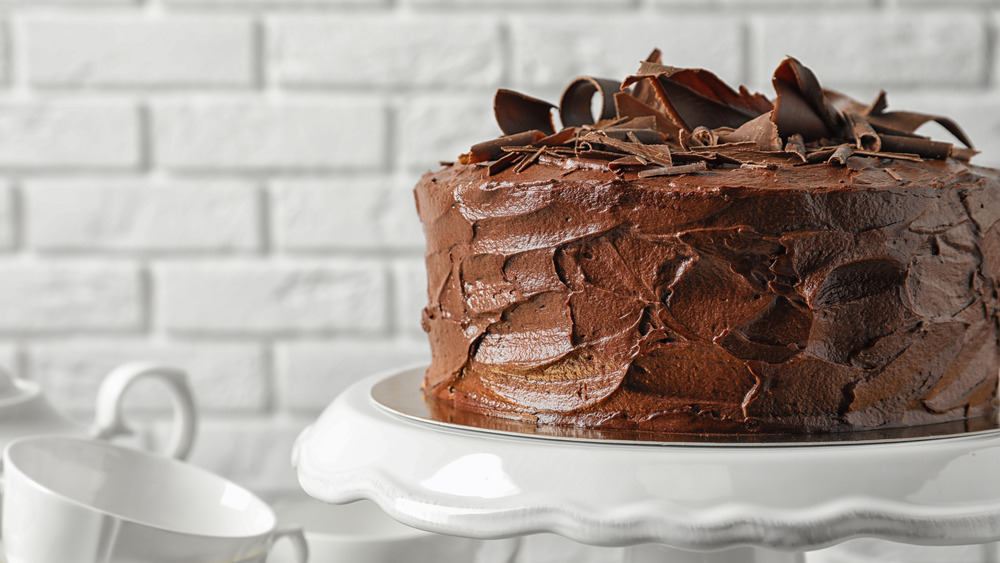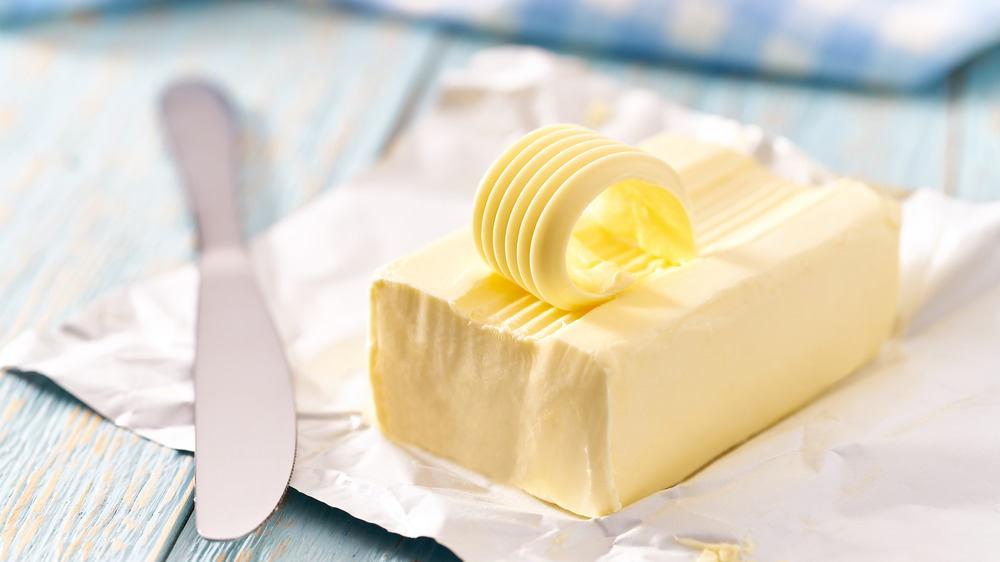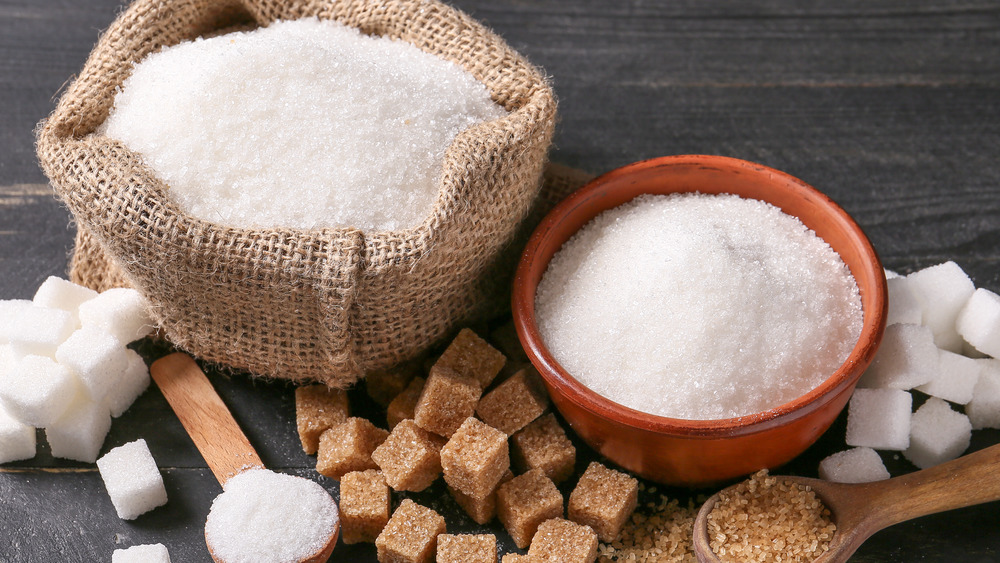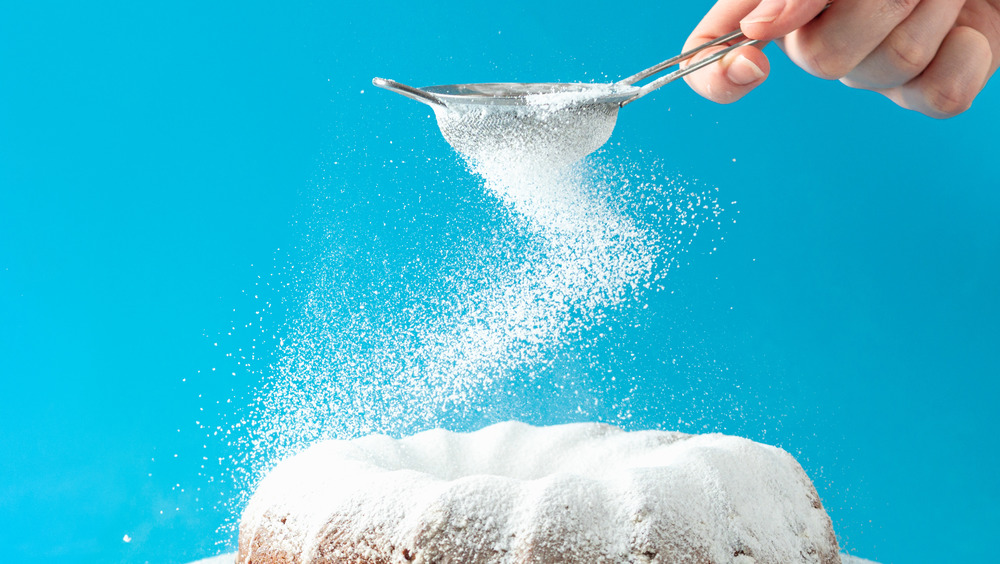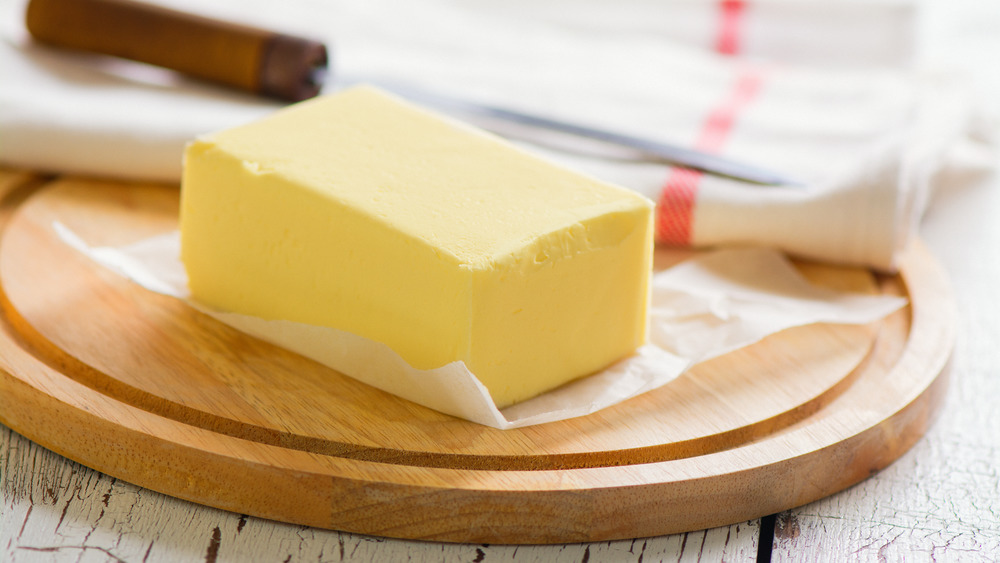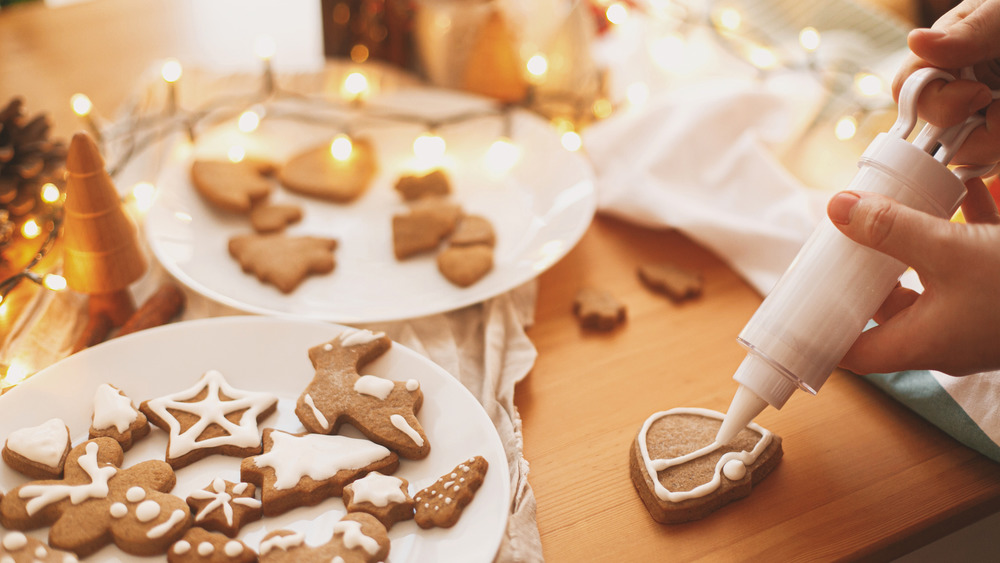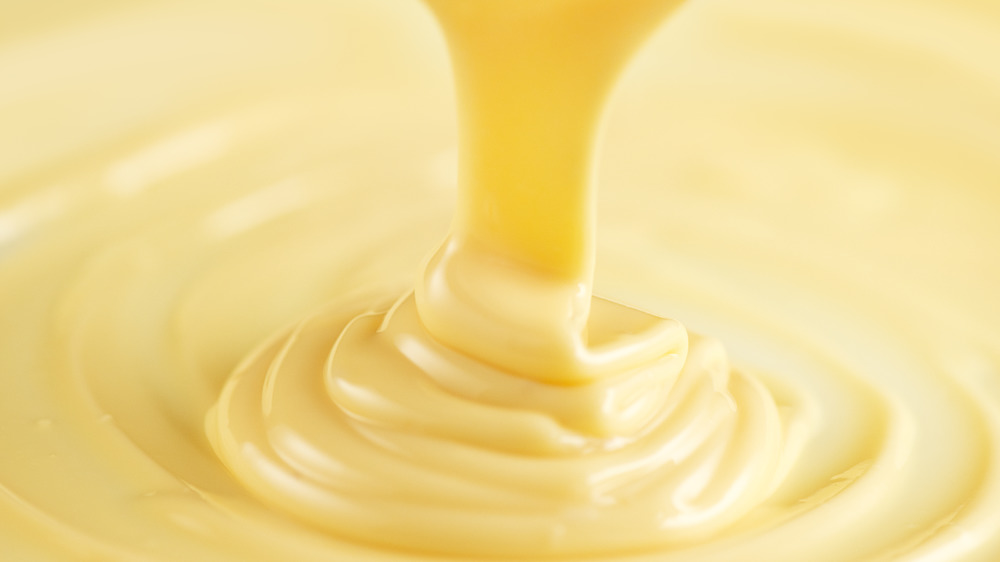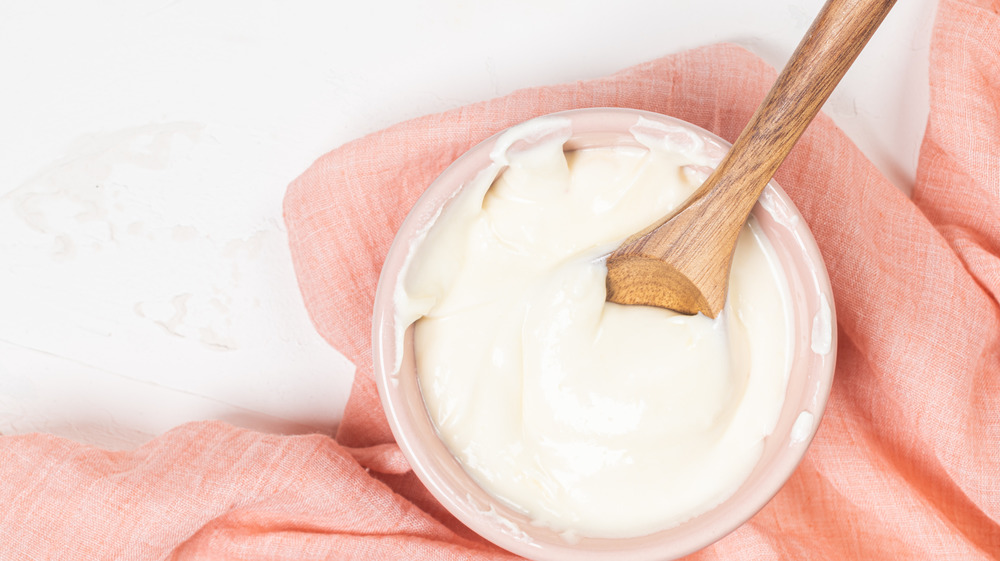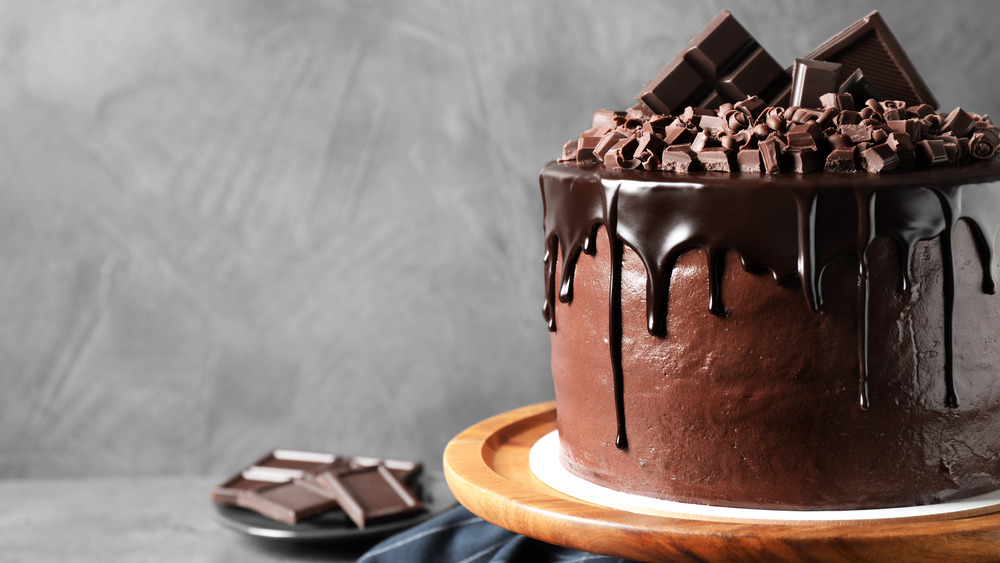Mistakes You're Making With Homemade Icing
It may seem like making icing is a piece of cake. It can be — but only if you know what you're doing.
When you fantasize about the perfect cake, you likely picture it coated in a gorgeous, velvety-smooth layer of buttercream. While that mouthwatering vision is definitely possible to achieve at home, it can also be pretty easy to mess up.
A great frosting involves using high-quality ingredients — and just the right amount of them — in addition to making sure your ingredients are at the correct temperature. For instance, using butter that's too cold or too much sugar can quickly ruin your frosting. And don't forget to layer the flavor in there. Icing should be delicious and not just a mixture of sugar and butter.
No matter how tedious making icing from scratch may seem, don't let that deter you. Homemade frosting can be just as delicious as anything you'd get from a bakery. In fact, it can turn out even better once you get the hang of it.
Your butter is too soft
While home bakers likely already know using butter that's too cold is a no-no when making icing, butter that's too warm — aka too soft — should also be avoided.
"If your butter is too soft, you will likely have a much less fluffy buttercream icing and [it] will likely be too soft to work with," pastry chef Jessica Lewis tells Mashed. The sugar will soften up the butter a bit, too.
One fix for this is letting the butter sit at room temp for no longer than two hours before baking, based on the temperature of your kitchen. "The warmer your kitchen, the less time your butter should sit out," Lewis tells Mashed. Once your butter is soft enough where you can mark it with a thumbprint, you are in good shape (via MyRecipes.com).
You're using too much sugar
You want your icing to be sweet, but not too sweet. "Make sure you're tasting your icing while it's being made and control the amount of sugar going in," pastry chef Jessica Lewis says to Mashed. Too much sugar, and it'll leave an unpleasant aftertaste. Too little sugar, and you'll get a buttery aftertaste.
One fix is an old-age chef trick: balancing flavors. If you taste that buttercream and it's just too sweet, add a pinch of salt. Salt helps balance the amount of sugar.
You only need a pinch of salt to balance that sugar, but according to Cake Decorist, a good timesaver is to simply use salted butter instead of regular butter in your recipe. Then, that salty addition will already be in there.
Other great ingredients that can help even out the sweetness include sour cream, crème fraîche, or mascarpone cheese. They'll add an extra layer of flavor to that icing, too.
You're using the wrong kind of sugar
To many people, sugar is sugar. That's not entirely true, and different types of sugar will yield different results when baking or making icing.
Granulated sugar is pretty common to use in icing, but a good rule of them is the coarser the sugar you use, the more evenly your icing sugar will blend. That's why granulated — a pretty coarse sugar — is a common choice.
However, according to pastry chef Jessica Lewis, powdered sugar is a great choice for icing. In fact, it's less likely to lead to a grainy texture than the popular granulated option.
Another option is to grind your coarse sugar in a blender until it looks powdery, according to wikiHow. Then, whisk that sugar and proceed with your recipe.
No matter what kind of sugar you use, be sure to sift it first. This will give you fluffy sugar, sans any clumps (via wikiHow).
Your butter is too cold
If your butter is stored in the fridge, plan ahead when making icing. "I recommend leaving the butter out for no more than two hours, depending on your kitchen's temp," pastry chef Jessica Lewis says to Mashed. If the butter is too cold, you'll end up with a lumpy buttercream — not the smooth texture you're looking for. "When that happens, use confection sugar to thin and smooth out the frosting," chef/entrepreneur Ebony Austin from Nouveau Bar & Grill, an Atlanta-based restaurant, suggests to Mashed.
Butter isn't the only area where temperature can cause issues. "The number one problem people have with making icing at home is getting it to the right temperature," Penny Stankiewicz, Pastry & Baking Arts Chef-Instructor at the Institute of Culinary Education says to Mashed.
If you're working with icing that's too cold, it will be thick and difficult to spread. "The trick here is that if you're planning to use the icing right after making it, make sure to use softened butter and have all the ingredients be at room temperature," Stankiewicz tells Mashed.
You aren't using high quality ingredients
As with any type of cooking or baking, the results you get are directly related to the quality of the ingredients you use.
"The most common mistake I see home bakers make with icing is not using high quality butter," Jocelyn Drexinger, owner of MINT + MALLOW kitchen and baker at Nellie's Free Range says to Mashed.
Creaming butter correctly is key to making a smooth frosting. Using a free range, slow-churned butter will give you the creamiest, and of course, tastiest frosting you could ever want. "With so few ingredients in a simple recipe like homemade icing, the flavor of every ingredient, be it good or bad, will really come through," Drexinger tells Mashed. "[A high quality butter's] superior structure that comes from cream produced by healthy, grass-fed cows, will also yield a smoother texture and make it that much easier for any home baker to achieve a delicious frosting."
You didn't add enough milk, or you added too much
More often than not, an icing recipe will call for milk or water. The right ratio of this can be the difference between hard, crumbly icing or an icing that's too runny.
Making icing is heavily reliant on using the right measurements of ingredients. That's why not adding enough milk or water is just as bad as adding too much milk or water.
"Buttercream needs a bit of milk or water to smooth out the mixture and combine everything," pastry chef Jessica Lewis says to Mashed. "If you use too much, you'll have icing soup, if you don't add enough, it'll be too dry or crumbly. Neither one will lead to a pleasant icing experience ... and if the icing is sad and unappetizing, the cake will be as well!"
A good habit to get into is adding every ingredient a little at a time. You can always add more, but you can't take away.
You didn't flavor your buttercream
Don't forget to flavor your buttercream. Buttercream will likely taste just like sugar or butter if you don't add flavor. While that may sound great at first, it won't be all that flavorful or memorable.
Adding flavor can be pretty simple. It's truly just a dash of extract or a splash of citrus. Play around and see what appeals to you the most. "A splash of vanilla makes a world of difference on a finger licking buttercream," pastry chef Jessica Lewis says to Mashed. You can also consider flavors like orange, lemon, or raspberry. But be forewarned: If you use too much extract, your icing can become bitter, so always work a little at a time.
This flavoring is also important if you want your buttercream to taste buttery, but not like butter. You need a solid balance of flavors, and this can be achieved with as little as a bit of lemon or orange zest mixed into the icing. A bit of Nutella or peanut butter can make a tasty difference, too.
You didn't take your time
"Slow and steady wins the race" is more than an old saying — it can be applied to making homemade icing, too.
"When making buttercream icing, the mixture will look broken as you start to slowly add butter into the egg white/cooked sugar base. The key to getting smooth, light buttercream is more whipping and more time. Keep mixing the buttercream icing with the whisk attachment, giving enough time for the butter to incorporate in between additions," Melanie Moss, pastry chef and co-founder of Mini Melanie, tells Mashed. "If your icing is looking lumpy, broken, or just ugly, more whipping and time usually does the trick. If your machine is running out of gas, heat helps as your butter may be too cold. Microwave a bit of the mixture and temper it in to let your icing get some more heat to nicely combine."
If you're using icing that was made in advance and then refrigerated, warm it to a good consistency while re-beating it. "I usually pop the icing into the microwave for about 30 seconds to get it started, then put it into a mixing bowl, and beat it with the paddle attachment until it gets to the right texture," Penny Stankiewicz, Pastry & Baking Arts Chef-Instructor at the Institute of Culinary Education says to Mashed. It will always come back together — you just need to be patient and give it some time. Be careful not to over-warm it, or it will start to melt.
